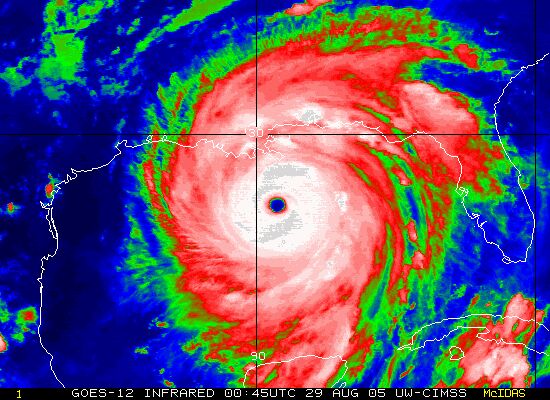
Most native Floridians are very familiar with preparing your home for a hurricane. Every year at this time, we keep an eye on the Atlantic Ocean, and take particular notice when a storm enters the Caribbean. We watch the storm models and the ‘spaghetti’ models, and we know when it’s time to head to Home Depot. We stock up on water, canned foods, sandbags, batteries, flashlights – all of the basics, and we hunker in. But, how do we approach a Hurricane from a professional aspect? Do we know, and do our co-workers know, not only when it’s time but also HOW to prepare our yards and job sites?
The first step is communication. Have a predefined means for communicating with employees in the days and weeks following the storm. It is very important to provide contact information to employees well in advance of the storm. Some employers provide pre-printed laminated wallet cards with information. Information may include a remote (hosted) company website or a toll-free telephone number hosted by a phone company located away from the storm zone. This will allow employees to get information and updates about the business, payroll and benefits information, and estimated dates for returning to work.
Many companies with locations in storm-prone areas ask employees to provide alternative contact information such as the phone number of of an out-of-state relative or a personal e-mail address. This can help the employer verify the safety of employees following a storm and contact persons who can assist in the business recovery process.
Facility shutdown procedures
Procedures for proper facility preparedness and shut-down should be developed and tested on a regular basis. Such procedures typically include:
What to expect
A "Hurricane Watch" is issued whenever a hurricane becomes a threat to coastal areas. Everyone in the area covered by the "watch" should listen for further advisories and be prepared to act promptly if a hurricane warning or evacuation order is issued.
A "Hurricane Warning" is issued when hurricane winds of 74 miles an hour or higher, or a combination of dangerously high water and very rough seas, are expected in specific coastal area within 24 hours. Precautionary actions should begin immediately.
Category One Hurricane
Approximate Storm Surge: 3-5 feet
Examples: Hurricane Lili (2002) in Louisiana; Hurricane Gaston (2004) in South Carolina
Category Two Hurricane
Example: Hurricane Isabel (2003) in North Carolina
Category Three Hurricane
Examples: Hurricane Katrina (2005) in Louisiana; Hurricane Jeanne (2004) in Florida; Hurricane Ivan (2004) in Alabama
Category Four Hurricane
Example: Hurricane Charley (2004) in Florida; Hurricane Iniki (1992) in Hawaii; the Galveston Hurricane (1900) in Texas
Category Five Hurricane
Examples: Only three Category 5 hurricanes have struck the United States since records began: The Labor Day Hurricane (1935) in the Florida Keyes, Hurricane Camille (1969) near the mouth of the Mississippi River, and Hurricane Andrew (1992) in Florida
Once a Hurricane Warning is issued for your area, you should immediately be in contact with your branch managers, as well as anyone else you work with on a job site. Communication is key in early preparation, to ensure that nothing is overlooked and everything is take care of. If you do not have everyone’s contact information, now is the time to do it. Don’t scramble for it while a storm is bearing down. The sooner we get a job site secured, the sooner you can return to your family to prepare your home. If your job site or yard is near water, a storm surge of 4 to 5 feet above sea level is expected. If it is a major storm, surges from 13 to 28 feet, and sometimes higher, are expected. Elevate as many items as you can to protect them in case of flood.
After the hurricane
When allowed by local authorities, secure the site and begin the damage assessment to buildings and equipment. Separate damaged from undamaged materials. Damaged items should be documented, and repairs should be prioritized; and proceed immediately.
All electrical systems, natural gas lines, fluid transfer operations, production and maintenance equipment and building structures should be examined by qualified individuals before returning to service.
Damaged fire protection systems should be quickly repaired and put back into service as soon as possible.
Before conducting any repairs to the facility, make sure the facility safety programs are fully implemented. Contractors, like employees, should follow proper safety procedures at all times.